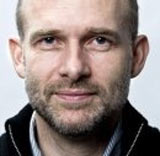 Interview with Bruno Ingemann, consultant and lecturer at the Danish School of Journalism.
Interview with Bruno Ingemann, consultant and lecturer at the Danish School of Journalism.
How do you think journalism will change in the next 10 years?
There will definitely be more interaction with the public – we’re only beginning. Journalists have to learn how to interact with the public, not only to get more information but also to improve journalistic quality. They could, for example, ask the public to help investigate. This is already done in England where Paul Bradshaw launched the project “Help Me Investigate.” The key point here is that journalists are still in control of what content they want published. Furthermore, journalists should learn how to use social media like Facebook and Twitter for journalistic processes.
Before your career as a consultant, you were working as a managing editor for the Danish media house Nordjyske Medier, which was one of the first media houses in Europe to introduce convergence in their newsroom. Does it still serve as a role model for other media houses?
Nordjyske Medier indeed created a very successful business model. However, now they must develop it further. They can’t rely solely on the media convergence which was, of course, a unique strategy a few years ago. Media houses must constantly reinvent their strategies. While they are applying one strategy, they should be developing the next one. Berlingske Tidende, the oldest newspaper in Denmark, for example, developed tremendously from a newspaper to a crossmedia publishing house, and is now developing its Internet activities even further, using crowd-sourcing, offering paid content online, and constantly looking for ways to add value to its online journalism. I believe Berlingske Tidende could become a new role model in the media landscape.
Tags: Berlingske Tidende, Bruno Ingemann, Danish School of Journalism, Facebook, Nordjyske Medier, Paul Bradshaw Help Me Investigate, Social media, Twitter














































